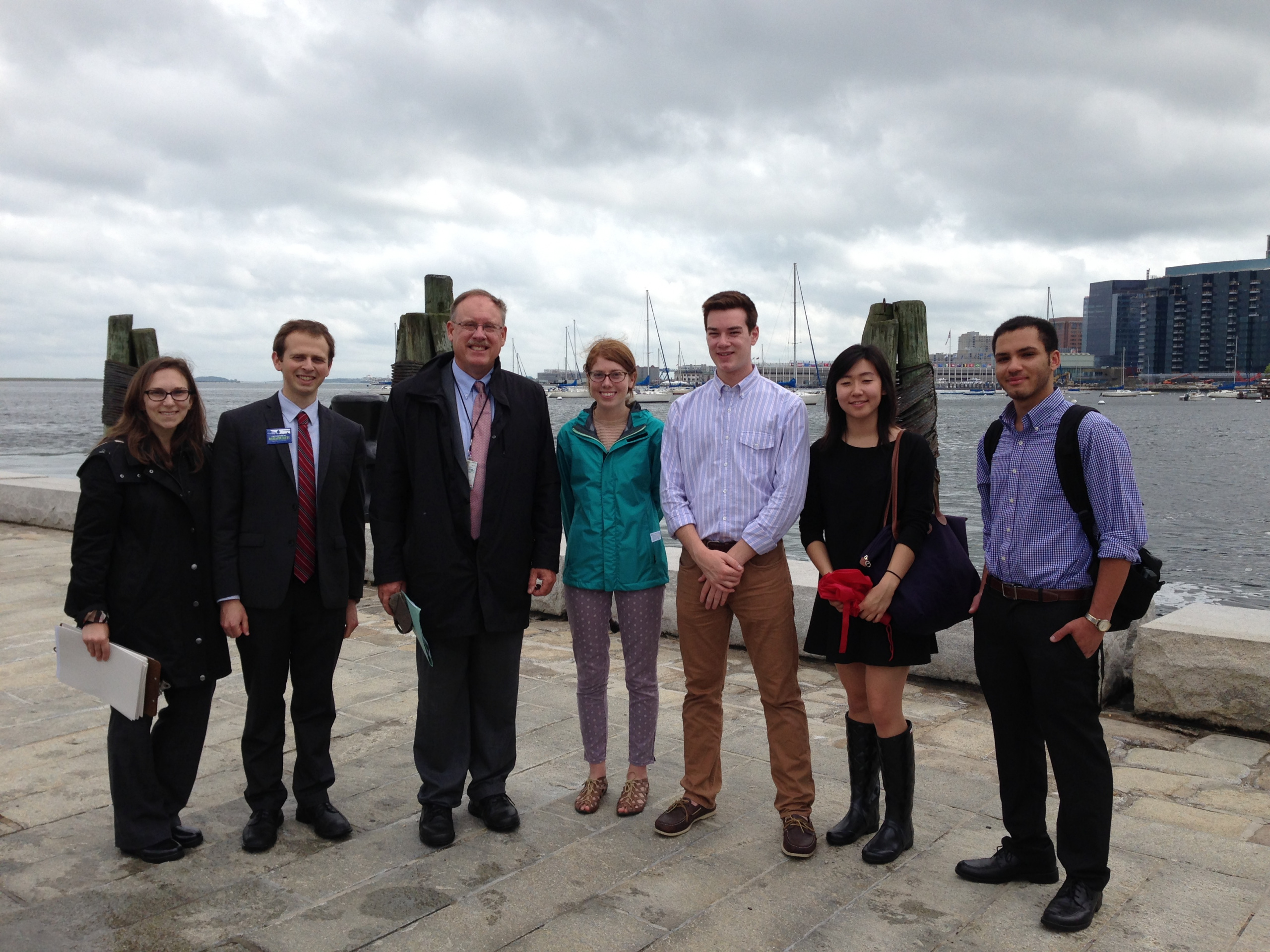Ben Hellerstein
Former State Director, Environment Massachusetts
Former State Director, Environment Massachusetts

Environment Massachusetts staff and interns stand with Curt Spalding, Regional Administrator for the U.S. Environmental Protection Agency’s New England Region, at an event on Boston Harbor to celebrate the Clean Water Rule.
Boston — At a spot overlooking Boston Harbor, once choked with toxic pollution but now home to some of the cleanest urban beaches in the United States, advocates gathered today to thank the Obama administration for closing loopholes in the Clean Water Act that previously left more than half of Massachusetts’ streams at risk of pollution.
“We’ve made so much progress in cleaning up our waterways, and we can’t afford to turn back the clock,” said Ben Hellerstein, State Director for Environment Massachusetts. “The EPA’s Clean Water Rule will make a big difference in protecting Boston Harbor, the Charles River, and all of the waterways we love.”
The Clean Water Rule, finalized in late May, clarifies federal protections for waterways following confusion over jurisdiction created by Supreme Court decisions in 2001 and 2006. It restores Clean Water Act protections to thousands of miles of streams that feed into iconic waterways like Boston Harbor and the Charles River and provide drinking water for 4.9 million Massachusetts residents.
Across the country, the protection of millions of acres of wetlands, vital for controlling floods and filtering pollutants, will also be clear under federal law.
“In New England, protecting our water is more important than ever, especially as we work to adapt to climate change impacts such as sea level rise and stronger storms,” said U.S. Environmental Protection Agency Regional Administrator Curt Spalding. “Protecting the most vulnerable streams and wetlands — a drinking water resource for one in three Americans — helps our communities, and this rule provides clarity for businesses and industry without creating new permitting requirements. The Clean Water Rule is based on the latest, peer reviewed science, and public input shaped the rule every step of the way.”
Prior to the release of the Clean Water Rule, small streams, headwaters and certain wetlands were in a perilous legal limbo, allowing polluters and developers to dump into them or destroy them in many cases without a permit. In a four-year period following the decisions, the U.S. Environmental Protection Agency had to drop more than 1500 cases against polluters, according to one analysis by the New York Times.
“The Clean Water Act is one of America’s great success stories, protecting Massachusetts’s environment and the public’s health,” said U.S. Senator Ed Markey. “While we have made large improvements in water quality since enactment of the Clean Water Act more than four decades ago, there is still more to do to ensure the fish from our rivers and lakes is safe to eat and our tap water is free of contaminants. The EPA has crafted a sensible rule based on comments from across the country and business sectors that will help ensure the Clean Water Act remains strong and effective for years to come.”
Prior to the passage of the Clean Water Act in 1972, Massachusetts’ waterways suffered from decades of pollution and neglect. As late as the 1980s, untreated sewage was regularly dumped into Boston Harbor, and high concentrations of industrial pollutants posed a public health risk.
The Clean Water Act prompted a major cleanup of the Harbor. Today, Boston boasts some of the cleanest urban beaches in the nation, and wildlife habitat has significantly improved.
Advocates pointed out that the Clean Water Act has enabled similar improvements in water quality in many of Massachusetts’ most iconic waterways, from the Charles River to the Connecticut River.
“The dramatic improvement in Charles River water quality over the past two decades is a direct result of Clean Water Act enforcement,” said Bob Zimmerman, Executive Director of the Charles River Watershed Association. “The EPA’s Clean Water Rule will help us in our efforts to fully restore the health of the Charles.”
Despite broad public support for clean water, polluting industries and some members of Congress are fighting to block implementation of the Clean Water Rule. In recent weeks, Congressional committees have approved multiple bills aimed at rolling back the Clean Water Rule.
Environment Massachusetts, in partnership with its affiliates in other states, has launched a far-reaching public outreach effort aimed at countering misinformation from polluters and mobilizing support behind the Clean Water Rule.
Through door-to-door outreach, Environment Massachusetts staff members have already educated tens of thousands of people about the Clean Water Rule this summer, and collected thousands of petition signatures supporting the rule.
These citizen supporters join more than 800,000 Americans, including over a thousand farmers, mayors, and small business owners, who have spoken out in support of the rule.
“Clean water matters to Massachusetts,” said Hellerstein. “We’re grateful to the Obama administration for taking this step forward, and we’re proud to help defend the Clean Water Rule against any and all attacks.”
###
Environment Massachusetts is a statewide, citizen-supported environmental advocacy organization working to protect clean air, clean water, and open space.
www.EnvironmentMassachusetts.org
